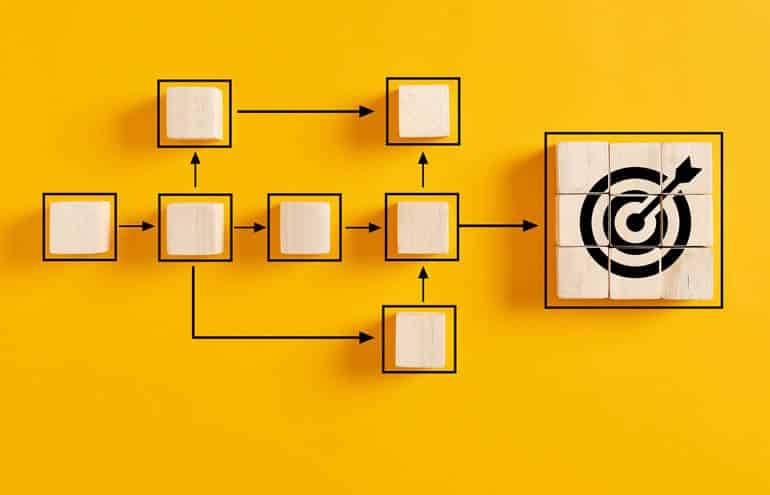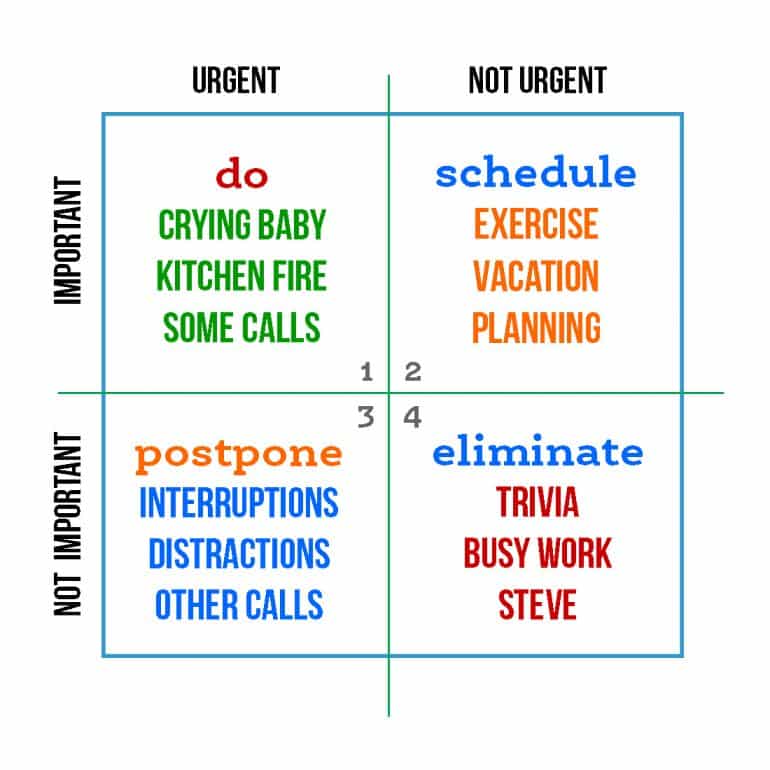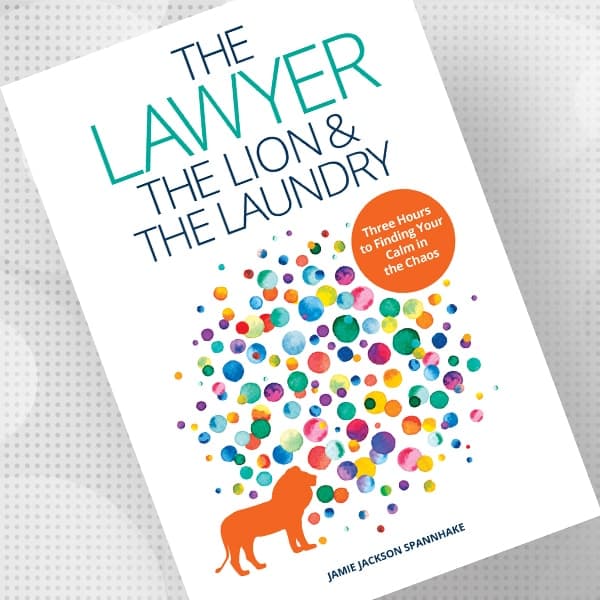Prioritization for lawyers can be difficult. Here are five strategies you can use to boost your productivity and deliver exceptional services.

Table of contents
- Juggling It All — Without Becoming a Stress Ball
- 1. Identify Your Core Objectives
- 2. Use the Eisenhower Matrix to Evaluate Tasks and Assignments
- 3. Use Time Management Techniques
- 4. Delegate and Outsource
- 5. Overcome Common Challenges in Prioritization
- Prioritization and Time Management Are Not Merely Techniques
In our practice of law, every case, document and decision can be significant. When everything is — or seems — important, prioritization can be difficult. But the ability to prioritize effectively is an indispensable skill we must learn and use.
Juggling It All — Without Becoming a Stress Ball
We, as lawyers, face a unique set of challenges in our daily work, from managing heavy caseloads to meeting stringent court deadlines, to satisfying demanding clients who may have unreasonable demands. And we must provide top-notch service or clients may look elsewhere. The consequences of poor prioritization can be dire, resulting in missed opportunities, dissatisfied clients and even ethics problems.
The stakes are high and the margin for error is slim: We need to juggle it all to be successful —and figure out how to keep stress under control.
Here are five strategies lawyers can implement to enhance productivity while delivering exceptional legal services amid the relentless pressures of our work.
1. Identify Your Core Objectives
In general, lawyers are detail-oriented and our work requires that we understand the intricacies of the law and facts. This can make it easy to lose sight of the bigger picture. To stay on track, identifying core objectives — for each matter, client and our careers — is key.
To prioritize effectively in our work, we must begin by clearly defining our overall objectives for each matter or client, and for our career as a whole. By having a clear understanding of what matters most, it is easier to prioritize tasks on a daily basis and focus on the ones that align with our objectives.
2. Use the Eisenhower Matrix to Evaluate Tasks and Assignments
Once we know our objectives, we need to practically approach the sometimes-overwhelming myriad of tasks we face each day. One way to evaluate tasks is to use the Eisenhower Matrix. Named after former U.S. President Dwight D. Eisenhower, who was renowned for his exceptional time management skills, this matrix categorizes tasks into four quadrants based on their urgency and importance.
- Quadrant 1 (Urgent and Important): These are tasks that demand immediate attention. They align closely with your core objectives and should be addressed promptly. Legal emergencies, imminent court deadlines, or critical client needs often fall into this category.
- Quadrant 2 (Important but Not Urgent): Tasks in this quadrant are vital but may not require immediate action. They are aligned with your core objectives and contribute to long-term success. Effective case strategy, client relationship-building, and professional development often fall into this category.
- Quadrant 3 (Urgent but Not Important): Tasks here are often distractions, though they seem urgent. They are not directly aligned with your core objectives and can consume time and energy. Handling non-essential phone calls or responding to low-priority emails are common examples. These are tasks that can be easily delegated to someone else to handle.
- Quadrant 4 (Neither Urgent nor Important): Tasks in this quadrant are non-essential and do not contribute to your core objectives. They should be minimized or eliminated altogether. These tasks can include time-wasting activities or excessive administrative work.

The key to effective prioritization lies in the careful categorization of tasks using the Eisenhower Matrix. By putting tasks to their respective quadrants, we get clear on which tasks align with our core objectives and deserve our attention. This methodical approach enables us to make informed decisions about where to invest our time and resources.
3. Use Time Management Techniques
Now that we know which tasks to work on first, we need to use effective time management techniques to work efficiently. One technique for enhancing focus and productivity is called the Pomodoro Technique, which revolves around breaking work into focused intervals, typically 25 minutes in length, followed by a short five-minute break. These intervals, referred to as “Pomodoros,” encourage deep concentration and prevent burnout. By applying this technique, lawyers can concentrate on high-impact tasks while maintaining mental stamina required for sustained productivity.
Time blocking is another time management strategy to try. This approach involves allocating specific blocks of time to particular tasks or categories of work. For instance, lawyers can designate mornings for research, writing, and strategizing, and afternoons for client meetings and administrative duties. Time blocking ensures that lawyers devote focused attention to all important areas of their practice while mitigating distractions and other interruptions.
Try both of these techniques and see what works best for you. The best time management tools are the ones you will use and find effective. There’s no one-size-fits-all.
4. Delegate and Outsource
My favorite time management tool is delegating. It is the most effective way to do more efficiently and without extra stress. When we effectively delegate tasks (like those in quadrant 3 of the Eisenhower Matrix), it frees us to concentrate on our core objectives and high-impact work.
Lawyers should leverage law firm staff and resources to their advantage by delegating tasks that do not require a lawyer’s expertise. Effective delegation not only lightens the lawyer’s workload but also empowers support staff to contribute meaningfully to the firm’s success.
In some instances, it makes sense to look outside our firms to outsource specific legal tasks to external experts. For example, complex research, specialized litigation support, or forensic analysis may be best handled by professionals with specialized skills. Outsourcing not only conserves our own time for our core objectives, but it also allows us to access knowledge and experience beyond our own.
5. Overcome Common Challenges in Prioritization
Even with a toolbox of prioritization strategies and time management techniques, our well-laid plans will be disrupted by phone calls, emails, impromptu client meetings and unexpected emergencies. Thinking about how to handle these inevitable challenges is another important part of our productivity. And the keys are adaptability and flexibility.
Just because our plans may need adapting during any (or every) day, doesn’t mean we shouldn’t make plans. Having a plan in place is the very thing that gives us the flexibility to adapt priorities. Be prepared to reprioritize tasks when new, urgent issues arise. Just keep your core objectives in mind to guide your decision-making. Regularly reviewing and adjusting our task lists can help us respond well to changing priorities.
Prioritization and Time Management Are Not Merely Techniques
They can be a transformative force in our work and lives. They can help us take control of our careers by optimizing productivity and staying aligned with our core objectives, ensuring both professional fulfillment and exceptional client service.
Image © iStockPhoto.com

Three Hours to Finding Your Calm in the Chaos
By Jamie Jackson Spannhake
In this bestselling book written for lawyers, former Biglaw litigator Jamie Spannhake helps you clarify your desires and set priorities so you can reclaim your time and enjoy your life. Available in soft-cover and digital format.

Sign up for Attorney at Work’s daily practice tips newsletter here and subscribe to our podcast, Attorney at Work Today.
















